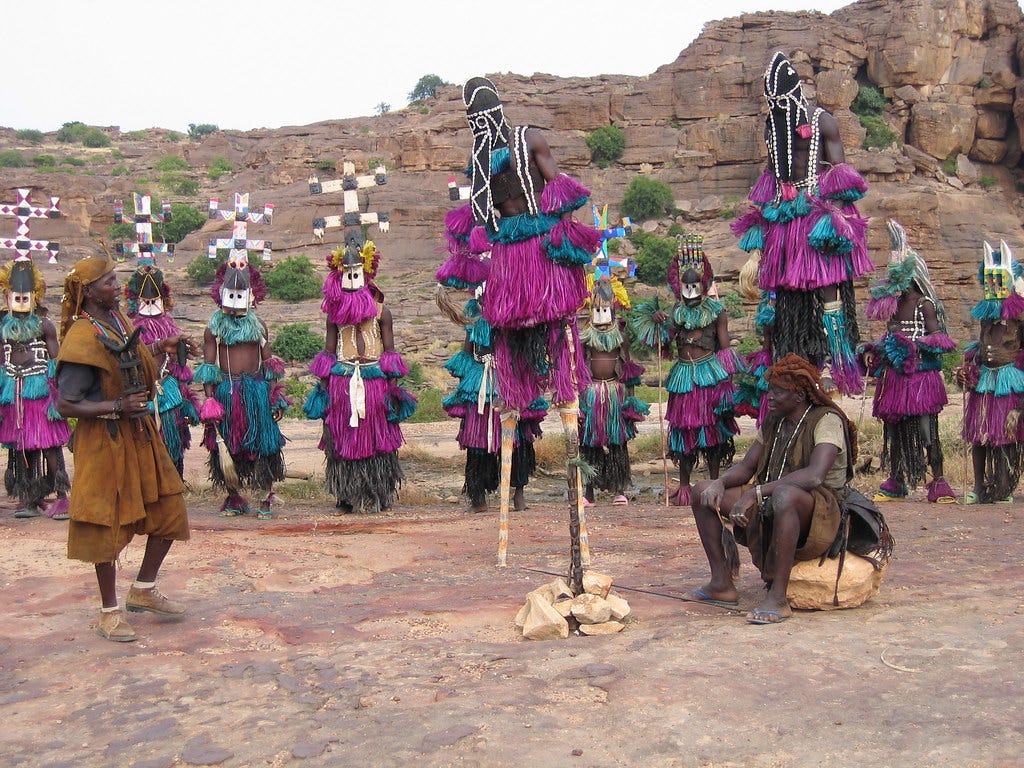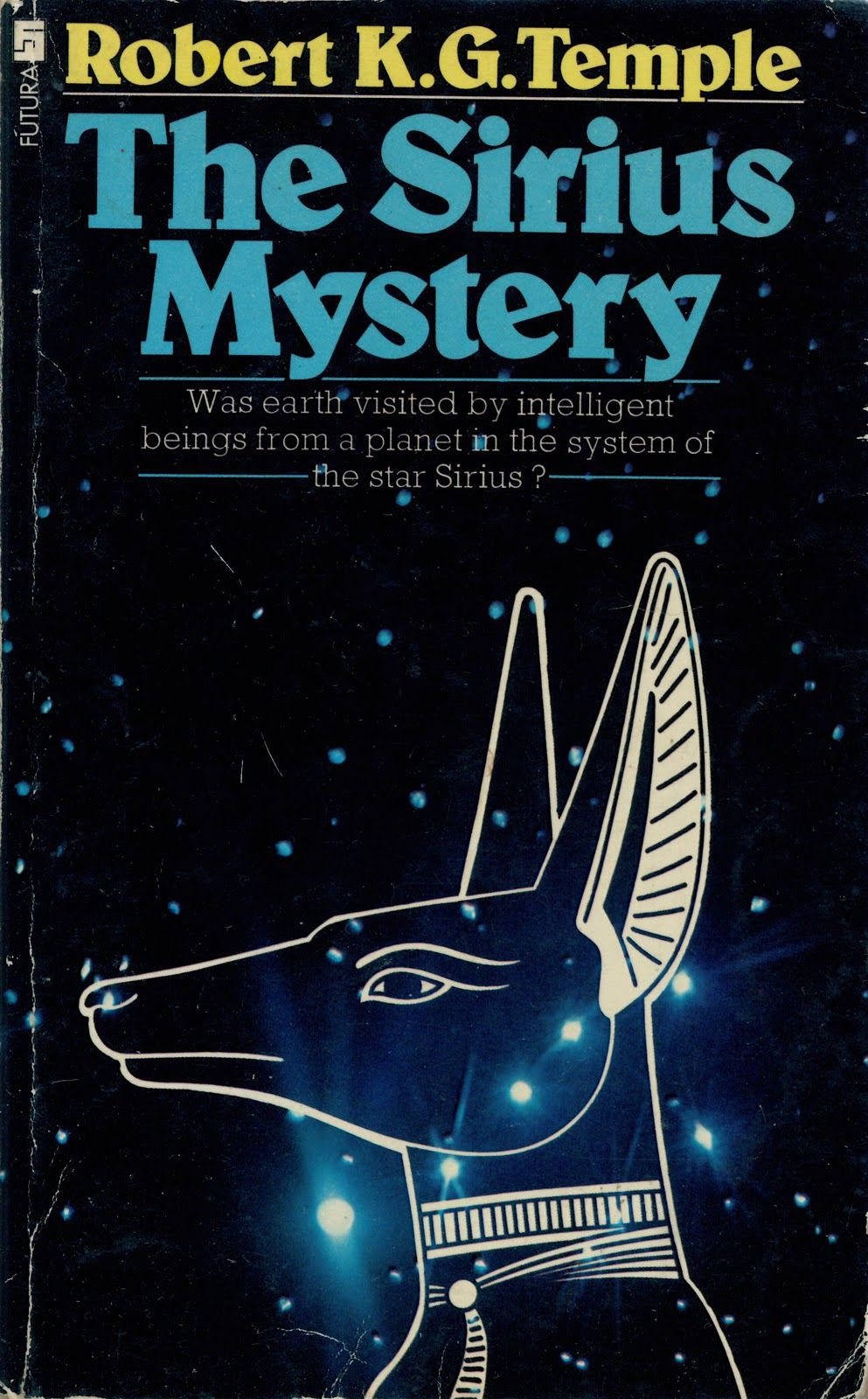The Dogon: Ancient Astronomers
Evidence that Extra Terrestrials visited and befriended Africans 5000 years ago
It is believed Africans made contact with aliens thousands of years ago and were given a gift. A gift of astronomical knowledge.
"The Sirius Mystery" is a book by Robert K. G. Temple, first published in 1976, that explores the ancient astronauts hypothesis, suggesting that extraterrestrial beings visited Earth in ancient times.
They Walked Among Us
The book posits that the Dogon people of Mali have maintained a tradition of contact with intelligent extraterrestrial entities from the Sirius star system. According to Temple, these extraterrestrials were pivotal in shaping ancient civilizations and were instrumental in the development of systems like those of the Egyptian Pharaohs, Greek mythology, and the Epic of Gilgamesh.
The book heavily relies on the work of ethnographers Marcel Griaule and Germaine Dieterlen and includes extensive comparative linguistic and mythological analysis, particularly focusing on similarities among Dogon, Yoruba, Egyptian, and Sumerian cultures. The second edition, published in 1998, is titled "The Sirius Mystery: New Scientific Evidence of Alien Contact 5,000 Years Ago."
Do you believe this? Or is it just an attempt to undermine the ingenuity of ancient African people? The argument that aliens did visit them is compelling.
Sirius
In the heart of West Africa, amidst the rugged terrain and sweeping landscapes of Mali, reside the Dogon people, an ethnic group with a population of approximately 800,000. They inhabit the Bandiagara Escarpment, a sandstone cliff of up to 500m high, stretching for about 150 kilometers. Beyond their unique art, intricate textiles, and distinctive architecture, the Dogon are renowned for something rather unexpected: their profound and ancient astronomical knowledge, particularly their understanding of the Sirius star system, long before modern telescopes and space exploration.
The Sirius star system, consisting of the stars Sirius A and Sirius B, is the subject of a rich oral tradition among the Dogon. Sirius, the brightest star in our night sky, is where their interest particularly lies. According to their tradition, Sirius has a companion star, "Po Tolo" (Sirius B), invisible to the naked eye and incredibly dense. They also reference a third star in the system, "Emme Ya" (Sirius C), and claim that the Sirius system is the home of the "Nommo," ancestral spirits who visited Earth and provided them with knowledge and enlightenment.
What makes this knowledge so fascinating and perplexing to researchers and scholars is how the Dogon, a people without any known astronomical instruments, were aware of celestial objects not visible without high-powered telescopes. Sirius B, a white dwarf, wasn't photographed until 1970, despite being known to Western astronomers since the 19th century. Its existence remained a hypothesis until it was confirmed in 1862, long after the Dogon had established their cosmology.
The source of the Dogon's astronomical knowledge is a subject of debate. They attribute it to the Nommo, amphibious beings sent to Earth from the Sirius system. Their mythology states that the Nommo descended from the sky in a vessel accompanied by fire and thunder, providing them with practical and spiritual guidance, hence becoming central figures in their religion.
Skeptics
The first records of the Dogon's cosmic beliefs were documented in the 1930s by French anthropologists Marcel Griaule and Germaine Dieterlen. The detailed accounts of the Dogon's astronomical knowledge, as recorded by Griaule and Dieterlen, were published in the 1960s, sparking widespread interest and debate. How could the Dogon possess such detailed knowledge of the heavens, accurately describing cosmic phenomena invisible to the unaided eye?
This enigma has led to various theories, both scientific and speculative. Some propose that the Dogon's knowledge might have come from contact with advanced ancient civilizations or extraterrestrial beings, a hypothesis popularized by authors like Robert Temple in his controversial book "The Sirius Mystery" that I spoke of earlier.
Others suggest a more recent origin, proposing that the Dogon may have had contact with modern astronomers or travelers knowledgeable about Sirius B's discovery before Griaule's documentation.
Skeptics argue that the Dogon's knowledge has been misunderstood or overstated, contending that there's no concrete evidence they knew about Sirius B before Western astronomers. Critics of Griaule's work suggest that the information might have been influenced by the anthropologists' own knowledge and biases during their research, leading to a self-fulfilling prophecy.
Regardless, the Dogon's astronomical knowledge is intriguing. If it’s true that these people have such detailed knowledge of the stars, and had such before contact with European astronomers, then the argument is compelling that they may have met or had communication with aliens. I only entertain this because it is allegedly what they themselves claim.
Sacred Culture
In a world where indigenous cultures are rapidly eroding, the Dogon’s is in danger and their knowledge needs to be preserved. Their culture, like many others, faces the pressures of modernization, conflict, and climate change, threatening traditional ways of life and the transmission of their oral history to future generations.
We have to do our part in preserving such historical and incredible stories.
PAY ATTENTION
Invite your friends to ALKEBULAN
Thank you for reading ALKEBULAN — your support allows me to keep doing this work. I truly appreciate you! If you enjoy ALKEBULAN, it would mean the world to me if you invited friends to subscribe and read with us. If you refer friends, you will receive benefits that give you special access to ALKEBULAN.







